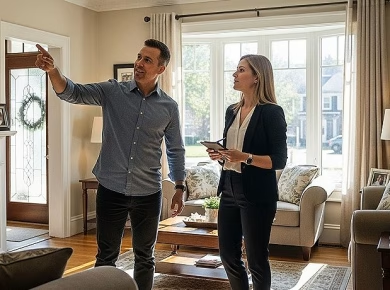Walking through the streets of a bustling city, it’s hard to ignore the empty storefronts that line the avenues, their vacant windows telling stories of past businesses and unfulfilled potential. As a seasoned real estate professional, I’ve learned that these seemingly desolate spaces often hide a wealth of insight into market dynamics, property investment opportunities, and the ever-evolving landscape of retail. Behind each shuttered door lies a narrative of consumer behavior, economic shifts, and the relentless pressures of competition. Understanding these layers is crucial for investors, property managers, and anyone involved in real estate.
Understanding Market Trends Through Empty Storefronts
The rise of empty storefronts often signifies more than just economic downturns; it reflects broader market trends that can inform investment decisions. For instance, in recent years, many urban areas have witnessed a shift from traditional retail to online shopping. As consumers increasingly turn to e-commerce, the demand for brick-and-mortar locations has waned, leading to a surge in vacancies.
Recognizing this trend allows investors to pivot strategically. Areas that were once retail hotspots may be ripe for redevelopment into mixed-use spaces, incorporating residential units alongside retail, which can create a vibrant community atmosphere. Understanding these trends not only helps in identifying potential investment opportunities but also aids in making informed decisions about property management and leasing strategies.
Identifying Opportunities in Underutilized Spaces
Empty storefronts can represent a unique opportunity for savvy investors willing to think outside the box. For example, consider the growing trend of pop-up shops. These temporary retail spaces allow businesses to test new products and markets without the long-term commitment of a traditional lease. By repurposing vacant storefronts for pop-up ventures, property owners can generate income while attracting foot traffic that benefits neighboring businesses.
Additionally, the demand for flexible workspaces has surged, especially in urban areas. Investors can transform vacant retail spaces into co-working environments, catering to freelancers and remote workers. This approach not only addresses the issue of underutilized space but also aligns with current workforce trends.
The Role of Community Engagement
Engaging with the local community is essential when addressing the challenges posed by empty storefronts. A collaborative approach involving property owners, local governments, and community members can lead to innovative solutions that breathe new life into these spaces.
For instance, hosting community events or markets in vacant areas can draw attention and encourage local patronage. This not only raises awareness of the empty spaces but also fosters a sense of community ownership and pride. When local residents feel invested in their neighborhoods, they are more likely to support initiatives that revitalize these areas.
Leveraging Local Partnerships
Building partnerships with local businesses can also provide a pathway to filling vacant storefronts. By connecting with small business owners and entrepreneurs, property owners can offer incentives such as reduced rent for the first few months or flexible lease terms. This approach not only benefits the tenants but also ensures that the property remains occupied, creating a more vibrant atmosphere that can attract additional foot traffic.
Furthermore, local governments often have resources available to support small businesses. Collaborating with economic development offices can uncover grants or programs aimed at revitalizing struggling areas, ultimately leading to a more sustainable occupancy rate.
Adapting to Changing Consumer Preferences
Consumer preferences are constantly evolving, and the rise of experiential retail is a prime example of this shift. Today’s consumers are looking for more than just products; they seek experiences that engage their senses and create memorable moments. This trend presents an exciting opportunity for property owners and investors to rethink the purpose of their vacant spaces.
Repurposing empty storefronts into venues for events, art galleries, or community classes can attract a diverse range of visitors. For example, a former clothing store could be transformed into a space for art exhibitions, cooking classes, or wellness workshops. By adapting to these changing consumer preferences, property owners can create dynamic environments that not only fill vacancies but also enhance the overall community experience.
Innovative Leasing Strategies
Implementing innovative leasing strategies can also play a pivotal role in addressing the issue of empty storefronts. Traditional long-term leases may not be feasible for all businesses, particularly startups or those testing new concepts. Offering short-term leases or month-to-month agreements can attract a wider array of tenants, providing them with the flexibility they need to succeed.
Moreover, consider offering “sweat equity” opportunities, where tenants can contribute to the renovation of the space in exchange for reduced rent. This not only helps fill vacancies but also fosters a sense of investment and pride in the property.
Conclusion: Embracing Change and Opportunity
The presence of empty storefronts in urban landscapes can be disheartening, but they also represent a canvas of opportunity for real estate professionals and investors willing to embrace change. By understanding market trends, engaging with the community, and adapting to consumer preferences, we can transform these vacant spaces into thriving hubs of activity.
As we move forward in this evolving landscape, it’s essential to approach each empty storefront with an open mind and a creative spirit. The key lies in recognizing the stories behind these spaces and using that knowledge to inform our strategies. By doing so, we not only enhance our portfolios but also contribute to the revitalization of the communities we serve. With the right approach, those empty windows can become gateways to new possibilities, inviting us all to reimagine the potential of our urban environments.







